Visit to download the full and correct content document: https://ebookmass.com/product/construction-operations-manual-of-policies-and-proce dures-fifth-edition-ebook-pdf-version/
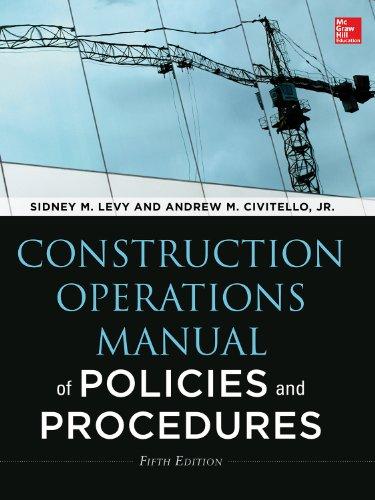
More products digital (pdf, epub, mobi) instant download maybe you interests ...
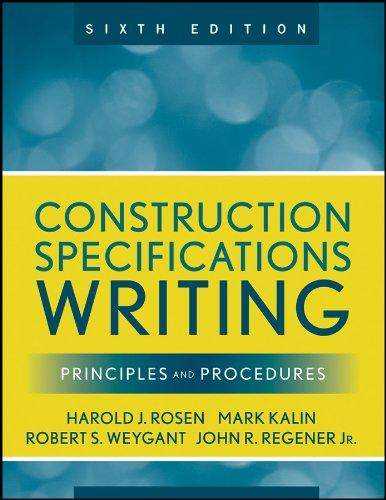
Construction Specifications Writing: Principles and Procedures – Ebook PDF Version
https://ebookmass.com/product/construction-specificationswriting-principles-and-procedures-ebook-pdf-version/
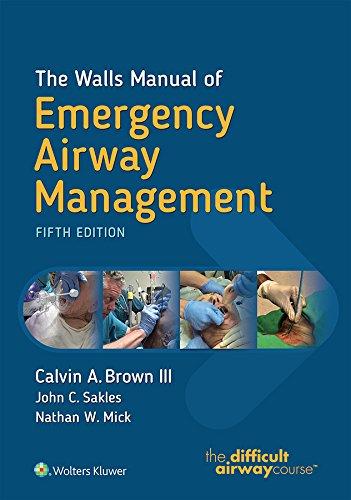
The Walls Manual of Emergency Airway Management Fifth Edition E-book PDF Version – Ebook PDF Version
https://ebookmass.com/product/the-walls-manual-of-emergencyairway-management-fifth-edition-e-book-pdf-version-ebook-pdfversion/

Psychology of Gender: Fifth Edition – Ebook PDF Version 5th
https://ebookmass.com/product/psychology-of-gender-fifth-editionebook-pdf-version-5th/
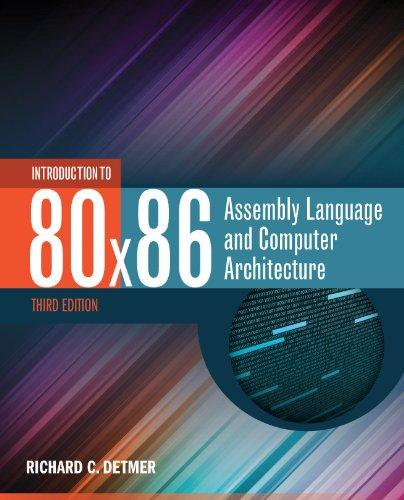
Introduction to 80×86 Assembly Language and Computer Architecture – Ebook PDF Version
https://ebookmass.com/product/introduction-to-8086-assemblylanguage-and-computer-architecture-ebook-pdf-version/
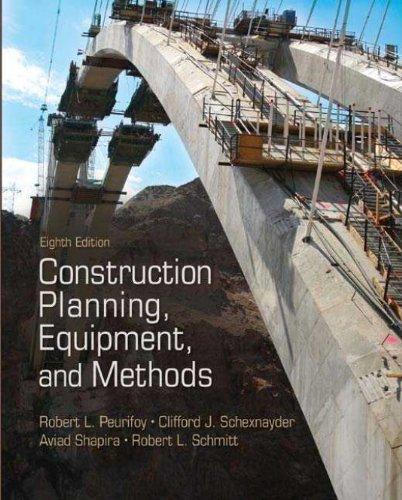
Construction Planning, Equipment, and Methods – Ebook PDF Version
https://ebookmass.com/product/construction-planning-equipmentand-methods-ebook-pdf-version/
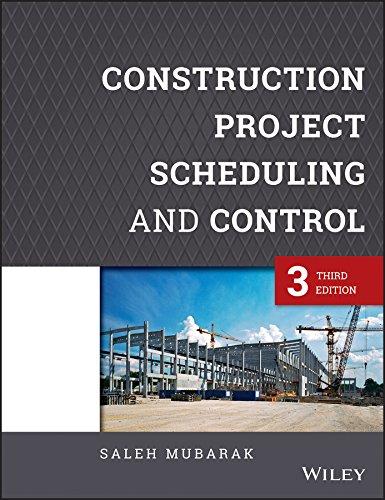
Construction Project Scheduling and Control – Ebook PDF
Version
https://ebookmass.com/product/construction-project-schedulingand-control-ebook-pdf-version/

American Government: Institutions and Policies 16th Edition – Ebook PDF Version
https://ebookmass.com/product/american-government-institutionsand-policies-16th-edition-ebook-pdf-version/
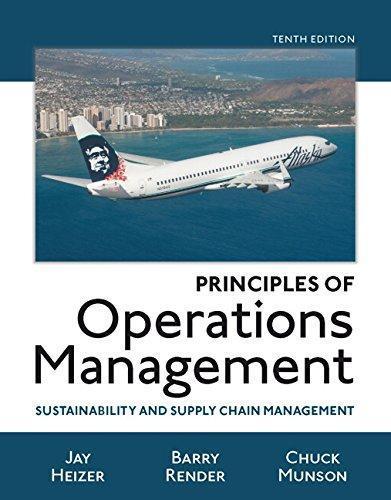
Principles of Operations Management: Sustainability and Supply Chain – Ebook PDF Version
https://ebookmass.com/product/principles-of-operationsmanagement-sustainability-and-supply-chain-ebook-pdf-version/
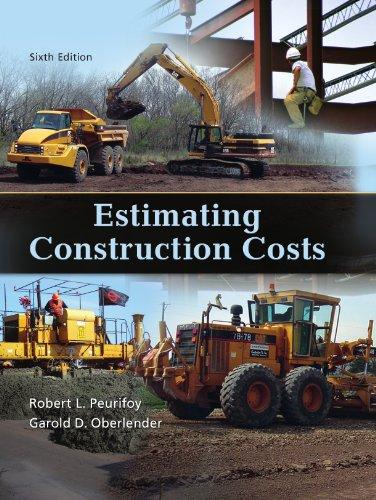
Estimating Construction Costs, 6th edition – Ebook PDF
Version
https://ebookmass.com/product/estimating-construction-costs-6thedition-ebook-pdf-version/
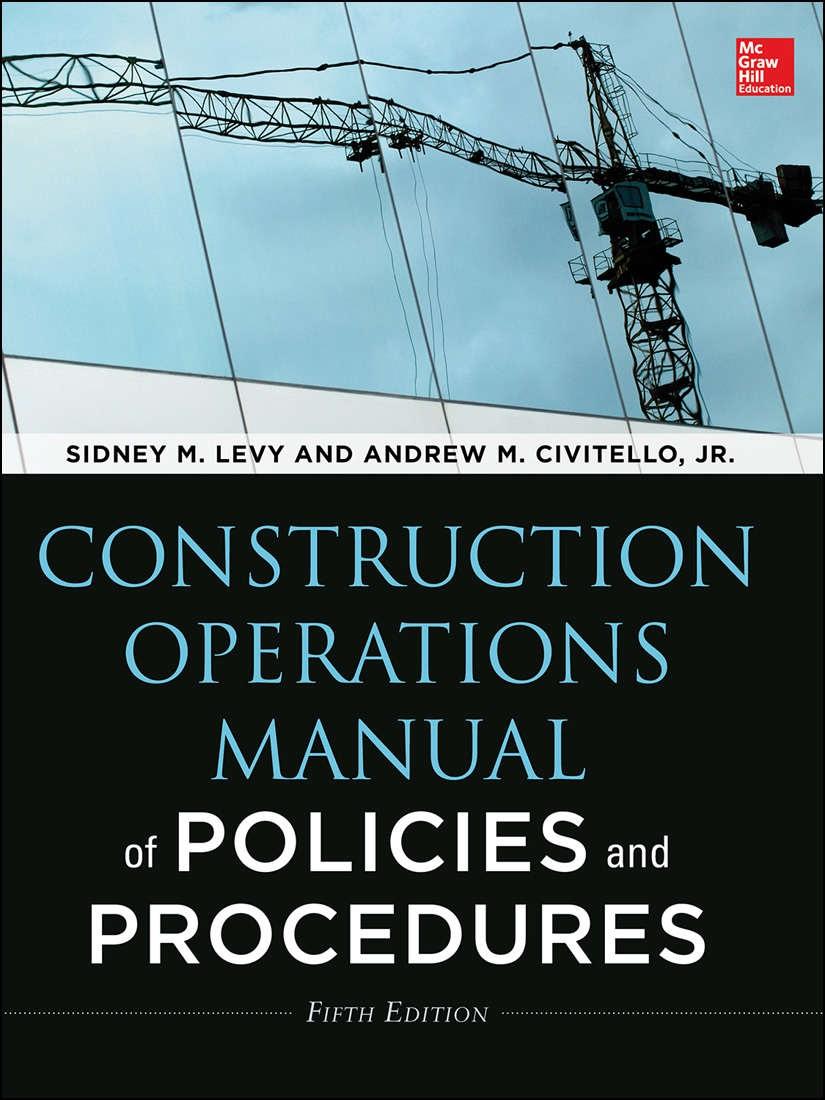
1 9 3 Business Cards
1.9.4 Contacts
1.9.5 Some Dos and Don’ts
1 9 6 Suggested Proposal Index
Section 2. Company and Project Administration
2.1 Section Description
2 2 Use of the Operations Manual
2.2.1 Overall Approach
2.2.2 Procedure
2.3 Correspondence
2.3.1 Objectives of Effective Written Communication
2 3 2 Rules of Effective Project Correspondence
2.3.3 Correspondence Distribution
2.3.4 Correspondence Checklist and Desk Display
2.4 Files and File Management
2 4 1 Overall File Structure
2.4.2 The Contract Documents
2.4.3 Setup and Maintenance of Plans, Specifications, and Changes
2 4 4 General Project File
2.4.5 The Chronological File
2.4.6 Clarification/Change Log
2 4 7 Subcontractor Summary and Telephone Log
2.4.8 Jobsite Subcontractor Performance Summary and Telephone Log
2.4.9 Submittal Log
2.5 Recovering a Letter Previously Mailed
2.6 Field Labor Time Reporting
2 6 1 General
2.6.2 Field Payroll Report Form
2.6.3 Procedure
2.6.4 Sample Field Payroll Report Form Completed Example
2.6.5 Sample Field Payroll Report Form Blank Form
2 7 Administrative Time Reporting
2.7.1 General
2.7.2 Procedure
2 7 3 Sample Weekly Administrative Time Sheet Completed Example
2.7.4 Sample Weekly Administrative Time Sheet Blank Form
2 8 Project Administrative Activity List
2.8.1 General
2.8.2 Project Administrative Activity List
2.9 Expenses and Reimbursements
2 9 1 General
2.9.2 Allowable Items
2.9.3 Guidelines for Expense Reporting
2 9 4 Sample Expense Report Blank Form
Section 3. General Contracts
3.1 Section Description
3 1 1 General
3.1.2 The “Conduit” Principle
3 2 Contract Structures, Relationships, and the Contracting Parties
3.2.1 General
3.2.2 Contract Structures
3 2 3 The Letter of Intent
3.2.4 The Cost Plus a Fee Contract
3.2.5 Labor Rate Breakdowns Journeyman Carpenter Regular Time and Premium Time
3.2.6 List of Equipment Proposed for Costs to be Reimbursed
3.2.7 The Cost Plus a Fee Contract with a Guaranteed Maximum Price (GMP)
3.2.8 Qualification or Exclusion and Clarification Exhibit
3.2.9 Lump Sum, General Contracting (GC)
3 2 10 Construction Management (CM)
3.2.11 Agency Construction Management (ACM)
3.2.12 Construction Management with Guaranteed Maximum Price (CM
w/GMP)
3.2.13 Design-Build
3.2.14 AIA Integrated Project Delivery and the ConsensusDOCS® Contracts
3 2 15 Comparison of Selected Articles from AIA A201™ and ConsensusDOCS®
3.3 Responsibilities of the Contracting Parties
3 3 1 Section Description
3.3.2 General Responsibilities of the Owner
3.3.3 General Responsibilities of the Architect
3.3.4 General Responsibilities of the Contractor
3.3.5 The Pass-Through Principle
3.4 General Principles of Contracts as Applied to Construction
3.4.1 General
3 4 2 Reasonable Expectations
3.4.3 Ambiguities Resolved against the Drafter
3.4.4 Right to Choose the Interpretation
3 4 5 Trade Custom
3.5 Key Principles of General Contracts
3 5 1 General
3.5.2 “General Scope of Work”
3.5.3 “Intent” versus “Indication”
3.5.4 “Reasonable Review”
3.5.5 Disclosure of Patent Errors
3.5.6 “Performance” and “Procedure” Specifications
3 5 7 Change Clause
3.5.8 Pass-Through Clause
3.5.9 Dispute Clause
3.5.10 Authority (Formal/Constructive)
3.5.11 Correlation of Contract Documents
3 5 12 Force Majeure
3.5.13 Impossibility and Impracticability
3.5.14 Termination
3 5 15 Notice
3.5.16 Proprietary Specifications
3 6 General Contract Bonds and Insurance
3.6.1 General
3.6.2 Bid Bonds
3 6 3 Performance Bonds
3.6.4 Payment Bonds
3.6.5 Insurance
3.6.6 Worker’s Compensation Insurance
3.6.7 Subcontractor Default Insurance
3.6.8 Controlled Insurance Programs (CIP)
3.7 Shop Drawing “Approval”
3 7 1 General
3.7.2 “Approval” Abuse
3.7.3 General Contractor Liability
3 7 4 Appropriate Contractor Action
3.7.5 Sample Letter #1 to the Owner Clarifying Shop Drawing “Approval”
3.7.6 Sample Letter #2 to the Owner Clarifying Shop Drawing “Approval”
3.8 Equals and Substitutions
3.8.1 General
3.8.2 Typical Contract Treatment
3.8.3 Application
3.8.4 Perspective
3.9 Responsibility to “Coordinate”: Use and Abuse
3 9 1 General
3.9.2 Operative Definition
3.9.3 Coordination Drawing Guidelines
3 9 4 Sample Letter to Owner Regarding Lack of Design Coordination
3.10 The Schedule of Values
3 10 1 General
3.10.2 Principles
3 10 3 Level of Detail
3.11 Requisitions for Payment and Contract Retainage
3 11 1 General
3.11.2 Maintenance of Billing Accuracy
3.11.3 Correlation of Subcontractor Schedule of Values with the General Schedule of Values
3.11.4 GC/Prime Contractor Retainage
3 11 5 Limits on Subcontractor Retainage
3.12 Liquidated Damages
3 12 1 General
3.12.2 Definition
3.12.3 Concepts and Clarifications
3 12 4 Technical Defenses and Considerations
3.13 Guarantees and Warranties
3 13 1 Definition of Terms
3.13.2 Date of Beginning Coverage
3.13.3 Express versus Implied Warranties
3.13.4 Submission Dates
3.13.5 Form
3 13 6 Sample Subtrade Guarantee/Warranty Notification Letter
3.13.7 Guarantee Period Checklist
3.13.8 Sample Letter to Owner Transmitting the Guarantee Period Checklist
3.13.9 Sample Notification of Pre-Punchlist Requirement
Section 4 Project Engineering
4.1 Section Description
4.1.1 Responsibilities of the Project Engineer
4.2 Trade Contracts and Subcontracts
4 2 1 General
4.2.2 Trade Contract/Subcontract Checklist
4.2.3 Review the Contract Documents Prior to Negotiating Subcontract Agreements
4 2 4 Subcontractor Negotiation Forms
4.3 Project Files
4 3 1 General
4.3.2 File Responsibilities of the Project Engineer
4.3.3 Duplicate Files Home and Field Offices
4.4 Subcontractor Summary and Telephone Log
4 4 1 General
4.4.2 Purpose
4.4.3 Preparation
4 4 4 Procedure and Use
4.4.5 Sample Subcontractor Summary Form Completed Example
4.4.6 Sample Subcontractor Summary Form Blank Form
4 4 7 Sample Telephone Log Form Completed Example
4.4.8 Sample Telephone Log Form Blank Form
4 5 Subcontractor/Supplier Reference Form
4.5.1 General
4.5.2 Purpose
4 5 3 Procedure and Distribution
4 6 Transmittal Form Letter Procedure and Use
4.6.1 General
4.6.2 Proper Use of the Transmittal Form Letter
4 6 3 Sample Letter of Transmittal Completed Example
4.6.4 Sample Letter of Transmittal Blank Form
4 7 Subcontract and Purchase Order Distribution Procedure
4.7.1 General
4.7.2 Procedure
4 7 3 Sample Subcontract/Purchase Order Transmittal Form Letter Completed Example
4.7.4 Sample Subcontract/Purchase Order Transmittal Form Letter Blank Form
4.7.5 Subcontract/Purchase Order Distribution Flowchart
4 7 6 Telephone and E-Mail Quotes
4 7 7 Telephone Quote Checklist
4.8 Subcontractor Schedule of Values
4 8 1 General
4.8.2 Time of Submission
4.8.3 Correlation with the General Schedule of Values
4 8 4 Level of Detail
4.8.5 Sample Subvendor Schedule of Values/Requisition for Payment Form
4.8.6 Sample Subvendor Schedule of Values/Requisition for Payment Form Letter
4.8.7 Sample Subvendor Schedule of Values Approval/Rejection Form Letter
4.9 Shop Drawing and Submittal Management
4.9.1 Operating Objectives of the Project Engineer
4 9 2 Submittal Log
4.9.3 Submittal Log Procedure
4.9.4 Sample Submittal Log Form Description of Terms
4 9 5 Sample Submittal Log Form Completed Example
4.9.6 Sample Submittal Log Form Blank Form
4.10 Submittal Requirements and Procedures
4.10.1 Action Responsibility
4 10 2 Submittal Responsibility
4.10.3 Sample Letter to Subcontractors Regarding Submittal Requirements
4.10.4 Submittal Review Checklist
4.10.5 Sample Form Letter to Subcontractors Regarding Shop Drawing Resubmittal Requirements
4.10.6 Reproductions of Submissions Subvendor Responsibility
4 10 7 Sample Reproduction Backcharge Notice Form Letter
4.11 Subcontractor Delivery Requirements
4 11 1 General
4.11.2 Expediting Subcontractor/Supplier Fabrication and Delivery Schedules
4.11.3 Sample Subcontractor/Supplier Delivery Requirements Form Letter
4.12 Request for Information
4 12 1 General
4 12 2 Use of the Request for Information (RFI) Form Letter
4.12.3 Sample Request for Information (RFI) Form Letter Completed Example
4.12.4 Sample Request for Information (RFI) Form Letter Blank Form
4 12 5 Use of the Request for Information (RFI) Tracking Log
4.13 Project Meetings
4 13 1 General
4.13.2 Meeting Purpose
4.13.3 Day and Time
4.13.4 Location
4.13.5 Participants
4.13.6 Subcontractor Participation
4 13 7 Sample Letter to Subcontractors Regarding Mandatory Job Meeting Attendance
4 13 8 Sample Letter to Subcontractors Regarding Lack of Job Meeting Attendance
4.13.9 Meeting Action Rules
4 13 10 Meeting Minutes
4.13.11 Sample Job Meeting Minutes Form Pages 1 and 2
4.13.12 Sample Meeting/Conversation Record Form
4 13 13 Meeting Agendas
4.13.14 Sample Letter Confirming a Special Meeting
4 14 Preparing for Project Close-Outs at Project Start-Up
4.14.1 Starting off on the Right Foot A Review of the Contract with the Owner
4.14.2 A Review of the Specifications
4.14.3 Punchlist and Warranty Items
4.14.4 Attic Stock and Spare Parts
4 14 5 Material Safety Data Sheets (MSDSs)
4.14.6 Subcontractor Responsibilities
4.14.7 A Protocol for Submission of Change Orders, Premium Costs, Winter Conditions
4.15 Securing Lien Waivers
4 15 1 General
4 15 2 Full versus Partial Waivers of Lien
4.15.3 Securing Subvendor Lien Waivers
4.15.4 Sample Letter to Subcontractors/Suppliers Regarding Failure to Provide Lien Waivers
4.16 Securing Subvendor Certified Payroll Reports
4.16.1 General
4.16.2 Example Certified Payroll Report Form
4 16 3 Payroll Liabilities on Construction Projects
4.16.4 Sample Letter to Subcontractors Regarding Delivery of Certified Payroll Report Forms
4 16 5 Sample Form Letter to Subcontractors Regarding Delivery of Lien Waiver Forms and Certified Payroll Report Forms
4 17 Backcharges
4.17.1 General
4.17.2 Conditions of the Backcharge
4.17.3 Backcharge Procedure
4.17.4 Use of Backcharge Notice Form Letter
4 17 5 Sample Backcharge Notice Form Letter Completed Example
4.17.6 Sample Backcharge Notice Form Letter Blank Form
4.17.7 Use of Backcharge Summary Log
4.17.8 Sample Backcharge Summary Log Completed Example
4.17.9 Sample Backcharge Summary Log Blank Form
4.17.10 Site Cleanup A Special Case
4 17 11 Sample Letter to Subcontractors Regarding Disregard for Finishes
4.18 The Punchlist: Expediting Final Completion
4 18 1 General
4.18.2 Sample Letter to the Architect Regarding Substantial Completion and Punchlist Review
4.18.3 Punchlist Review and Distribution Procedure
4.18.4 Sample Punchlist Notification Form Letter #1
4.18.5 Sample Punchlist Notification Form Letter #2
4 18 6 Sample Punchlist Notification Form Letter #3
4 18 7 Sample Notice of Supervisory Costs for Late Final Completion
4.19 Securing Subcontractor/Supplier Guarantees and Warranties
4 19 1 General
4.19.2 Procedure
4.19.3 Sample Request for Guarantees/Warranties Form Letter #1
4 19 4 Sample Final Notice to Subvendors to Provide Guarantees/Warranties
4 20 Subvendor Performance Evaluation
4.20.1 Use of Subvendor Performance Evaluation Form
4.20.2 Sample Subvendor Performance Evaluation Report Completed Example
4 20 3 Sample Subvendor Performance Evaluation Report Blank Form
4.21 Project Close-Out Checklist
4 22 Productivity
4.22.1 Section Description
4.22.2 Factors Affecting Productivity
4 22 3 FMI Annual Survey on Productivity
4.22.4 Productivity Improvement Self-Audit
4.22.5 Productivity Improvement Guide for Construction Contracts
Section 5 Site Superintendence
5.1 The Site Superintendent Function Section Description
5.2 Responsibilities of the Site Superintendent
5 3 Field Organization
5.3.1 Field Staff Considerations
5.3.2 Example Field Staff Arrangements
5.4 Site Utilization Program
5.4.1 General
5.4.2 Program Components
5.4.3 Sample Site Utilization Plan
5.5 Field Office Mobilization
5.5.1 General
5 5 2 Establishing the Field Office and Facilities
5.5.3 Establishing Company Presence
5 5 4 Visitor Control
5.5.5 Sample Jobsite Visitor Sign-In and General Release
5.5.6 Sample Visitor Sign-In Notice
5.6 Jobsite Administrative Mobilization
5.6.1 General
5 6 2 Construction Administration
5 7 Jobsite Mobilization Checklist
5.8 Subcontractor Summary and Jobsite Phone Log Book
5.8.1 General
5 8 2 Purpose
5.8.3 Procedure and Use
5.8.4 Sample Jobsite Subvendor Summary Form Completed Example
5 8 5 Sample Jobsite Subvendor Summary Form Blank Form
5.8.6 Sample Telephone Log Form Completed Example
5.8.7 Sample Telephone Log Form Blank Form
5.9 Daily Field Report
5.9.1 Description and Responsibility
5 9 2 Purpose
5.9.3 Need for Proper, Consistent Attention
5.9.4 General Procedure
5.9.5 Report Preparation Guidelines
5.9.6 Report Information Guidelines
5.9.7 Sample Daily Field Report Form Completed Example
5 9 8 Sample Daily Field Report Form Blank Form
5 10 Equipment Use Release Form
5.10.1 General
5.10.2 Use and Procedure
5 10 3 Sample Equipment Use Release Form
5.11 Preconstruction Survey
5 11 1 General
5.11.2 Preconstruction Photographs
5 11 3 Preconstruction Video
5.11.4 General Verification of Existing Site Information
5.11.5 Adjacent Properties
5 11 6 Sample Letter to Owner Regarding Unanticipated Effects of Adjacent Properties
5.11.7 Verification of Grades, Elevations, and Contours
5.11.8 Sample Letter to Owner Regarding Discrepancies in Existing Grades and Elevations
5.11.9 Verifications of Existing Site Constructions
5.11.10 Sample Letter #1 to Owner Regarding Changed Site Conditions Simple Condition
5.11.11 Sample Letter #2 to Owner Regarding Changed Site Conditions Complex Condition
5.12 Field Engineering, Layout, and Survey Control
5.12.1 Responsibility, Organization, and Description of Work
5 12 2 Baselines and Benchmark
5.12.3 Site and Building Layout and Procedure
5 13 Excavations Special Precautions
5.13.1 General
5.13.2 “Call-Before-You-Dig”
5.13.3 Sample Notification Checklist Prior to Proposed Excavation
5 14 Cutting Structural Elements
5.14.1 General
5.14.2 Sample Structural Modification Authorization Form
5.15 Control of Materials Embedded in Concrete
5.15.1 General
5 15 2 Sample Concrete Placement Checklist and Sign-Off Form
5.16 Construction Photographs
5 16 1 Description and Requirements
5.16.2 Regular Progress Photographs
5.16.3 Special Situations
5.16.4 Use of Photograph Layout Form
5.16.5 Sample Photograph Layout Form Completed Example
5 16 6 Sample Photograph Layout Form Blank Form
5 17 Managing Time and Material
5.17.1 General
5.17.2 Field Staff and Company Responsibility
5 17 3 T&M Procedure
5.17.4 Sample Letter to Subcontractors Regarding T&M Submission Requirements
5.17.5 Sample T&M Form (Daily Report of Extra Work)
5.17.6 Using T&M Records to Support Changes and Claims
5.17.7 Sample Letter to Owner Regarding Acknowledgment of Actual Work Performed
5 18 Field Purchases Procedure
5.8.1 General
5.18.2 Procedure
5 18 3 Sample Field Purchase Order Log
5.18.4 Sample Field Purchase Order Form
5 19 Winter Precautions
5.19.1 General
5.19.2 Subcontractor, General Contractor, and Owner Responsibilities
5.19.3 Winter Precautions Checklist
5 20 As-Built Drawings
5.20.1 General
5.20.2 Procedure
5.21 The Site Superintendent as Project Leader
5.21.1 Section Description
5 21 2 Simple Expediting Techniques
5.21.3 Improving Supervisory Communication
5.21.4 Reducing Clerical and Administrative Errors at the Jobsite
5.22 Hot Work Permit
5.22.1 Sample Hot Work Permit Form
5.23 Jobsite Equipment Use, Operation, and Maintenance
5 23 1 Section Use
5.23.2 Equipment Prestart, Operation, and Maintenance
5 23 3 Sample General Equipment Safety Checklist
5.23.4 Sample Equipment Safe Operation Checklist
5.23.5 Sample Prestart Inspection Checklist
5 23 6 Sample Equipment Service Safety Checklist
5.23.7 Sample Equipment Fire Prevention Maintenance Checklist
5 24 Building Commissioning and Turnover to the Owner
5.24.1 National Institute of Building Sciences Introduction to Building Commissioning
5.24.2 Recommendations
5.24.3 Key Commissioning Documentation: Predesign, Design, Construction
Section 6. Safety and Loss Control
6 1 Section Description and Company Policy
6.1.1 Section Description
6.1.2 Most Frequently Cited OSHA Standards Violations as of September 2012
6.1.3 Ten Most Frequently Cited OSHA Violations for the Fiscal Year 2011
6.1.4 Company Safety Policy
6 1 5 Sample Company Safety and Loss Control Policy
6.1.6 Sample Jobsite Safety Policy Notice
6.1.7 Sample Disciplinary Action Policy and Procedure for Safety Violations
6.1.8 Sample Safety Violation Warning Notice
6.2 Safety and Loss Control Responsibilities and Employee Participation
6 2 1 Responsibility Assignment
6.2.2 Company Safety Committee
6.2.3 Safety Committee Function and Objectives
6 2 4 Safety Committee Structure and Duties
6.2.5 The Safety and Health Manager
6.2.6 Responsibilities of the Senior Project Manager
6 2 7 Responsibilities of the Project Manager
6.2.8 Responsibilities of the Site Superintendent
6.2.9 Responsibilities of the Job Foreman
6 2 10 Responsibilities of All Company Employees
6 2 11 Responsibilities of Subcontractors and Trade Contractors
6.2.12 Responsibilities of Architects, Engineers, Owners, and Visitors
6 3 Jobsite Safety Program
6.3.1 Section Description
6.3.2 Sample Jobsite Safety Inspection Report Form
6 3 3 Jobsite Inspection Program
6.3.4 Field Safety and Loss Control Inspection Procedures
6.3.5 Sample Jobsite Safety Inspection Report Form
6.3.6 Sample Jobsite Safety Planning Checklist
6.3.7 Vendor Insurance
6.3.8 First Aid Kit
6 3 9 Safety and First Aid Training
6 4 Jobsite Safety Meetings
6.4.1 Section Description
6.4.2 Initial Project Safety Orientation Meeting
6 4 3 Regular Jobsite Safety Meetings
6.4.4 Weekly Tailgate Safety Meetings
6.4.5 Sample Tailgate Safety Meeting Topics and Outlines
6 4 6 Sample Jobsite Safety Review Checklist
6.4.7 Jobsite Safety Inspections by Outside Officials
6.5 Accident Investigation, Reporting, and Records
6.5.1 Reporting Requirements
6.5.2 Investigation Requirements
6 5 3 Investigation Procedure
6.5.4 Sample Accident Investigation Report Form
6.5.5 Sample Accident Eyewitness Statement Outline
6.6 OSHA’s Hazard Communication Standard and Safety Data Sheets
6 6 1 The Hazard Communication Standard: Fact Sheet No OSHA 93-26
6.6.2 A Hazard Communications Checklist
6.6.3 OSHA Hazard Communication Safety Data Sheets
6 6 4 HCS Pictograms Required on Products When Implemented
Section 7 Design-Build Project Administration
7.1 Section Description
7.1.1 Administrative Differences
7 1 2 Institutional Changes
7.1.3 Licensing and Legal Issues
7.1.4 Liability, Bonding, and Insurance Issues
7 1 5 Contract Provisions Unique to Design-Build
7.1.6 Administration of the Design-Build Contract
7.2 Creating the Design-Build Team
7.2.1 Formation of the Team
7.2.2 Financial Strength
7.3 Consideration of a New Business Entity
7 3 1 The Partnership
7.3.2 The Corporation
7.3.3 The S Corporation
7 3 4 The Limited Liability Corporation (LLC)
7.3.5 The Joint Venture
7 4 Creating the Design-Build Team
7.4.1 The Teaming Agreement
7.4.2 AGC’s Document No. 499
7.4.3 AGC Document No. 499 Standard Form of Teaming Agreement for Design-Build Project
7.4.4 Teaming Agreement Part 1 or Part A
7.4.5 Teaming Agreement Part 2 or Part B
7.4.6 The Contract Format between Owner and Design-Builder
7.5 The Bridging Approach to Design
7.6 Extracting the Owner’s Program
7 6 1 AGC Document No 410 Standard Form of Design-Build Agreement and General Conditions between Owner and Design-Builder
7.7 Design-Build Projects in the Public Sector
7.7.1 Requests for Proposals
7 7 2 The Two-Part Public Works RFP
7 8 The Evaluation Process
7.9 Safety Issues
7.9.1 The Safety Program
7.10 Quality Issues
7.11 Comprehensive List of Contract Documents Issued by the Design-Build Institute of America
Section 8. The Preparation and Processing of Change Orders
8.1 Section Description
8.1.1 The Contract Specifications
8.1.2 Defective Specifications
8.2 Contract-Related Change Order Provisions
8.2.1 Time Required for Submission of Proposed Change Orders
8 2 2 Allowable Overhead and Profit on Change Order Work
8.2.3 The “Should Have Known” Provision
8.2.4 Provisions Unique to a Cost Plus GMP Contract
8.3 Presentation of the PCO or COR Must be Clear and Concise
8.3.1 Defining Scope Change
8 3 2 Scrutiny of Accompanying Subcontractor Proposals
8.3.3 Labor Rate Breakdown with Questionable Increases for Premium Time
8.3.4 Labor Rate Breakdown with Clearly Defined Increases for Premium/Double Time
8.3.5 Sufficient Cost Information to Allow for a Prompt Review
8.4 Conditions That Create Change Orders
8.4.1 Errors and Omissions
8 4 2 Drawing Coordination Problems
8.4.3 Sample Notification to Architect of Coordination Problems
8.4.4 Sample Letter to Architect with Specific Drawing Coordination Problems
8 4 5 Sample Letter Advising Architect/Owner of Coordination Problems
8.4.6 Delays in the Construction Process
8.4.7 Winter Conditions and Other Weather-Related Matters
8 4 8 Request by the Owner for Premium Time Work
8 4 9 Sample Authorization to Proceed with Premium Time Work
8.4.10 Latent Conditions
8.4.11 Incomplete Design
8 4 12 Owner-Generated Costs
8.5 Types of Change Order Requests
8 5 1 Review the Contract as a First Step
8.5.2 Unit Price Change Orders
8.5.3 Minor No Cost/Time Impact Change Orders
8.6 Costs to be Considered When Assembling a Change Order
8 6 1 Direct Costs
8.6.2 Indirect Costs
8.6.3 Impact Costs
8.7 The Construction Change Directive (CCD)
8.7.1 Purpose of the Construction Change Directive
8 7 2 How a CCD Is Initiated
8.7.3 Sample Letter Initiating a Construction Change Directive
8.7.4 Allowable Costs in a CCD
8 7 5 Advantages of the CCD
8 8 Roadblocks to Acceptance of Change Orders
8.8.1 The Owner’s Perspective
8.8.2 The Architect’s and Engineer’s Perspective
8 8 3 The Contractor’s Perspective
8.8.4 The Solution
8.8.5 Quantum Meruit and Unjust Enrichment
8.9 Protocol for Change Orders, Premium Costs, Winter Conditions
Section 9. Construction Disputes, Claims and Resolutions
9 1 General
9.1.1 State of Global Construction Disputes
9.1.2 Top Five Causes of Disputes
9 1 3 Party-to-Party Negotiations Work
9.2 When Negotiations Fail
9 3 Some Disputes Occur in the Bid Proposal Process
9.3.1 Public Works Procedures
9.3.2 Late Bids Rejected?
9 3 3 Challenging a Bid Rejection
9.3.4 In the Public Interest
9 4 Promissory Estoppel
9.4.1 Promissory Estoppel Principle
9.4.2 Challenges to Oral Bid Withdrawal
9.5 Other Contentious Disputes
9 5 1 Delay Claims
9.5.2 Delays and Lost Productivity
9.5.3 Sample Letter Advising of a Delay
9 5 4 Contractor’s Claim for Lost Productivity
9.5.5 Contractor to Prove Loss of Productivity
9.5.6 The Measured Mile
9 5 7 Challenges to the Measured Mile
9.5.8 Subcontractor Support
9.5.9 Example of the Measured Mile Approach to Lost Productivity
9 5 10 Two Court Decisions Providing Further Validation of the Measured Mile Approach
9.5.11 Subcontractor’s Measured Mile Approach
9.6 The Total Cost Approach
9.6.1 Contractor Proof Requirements
9.6.2 Court Case Using Total Cost Approach
9 7 Differing Conditions
9.7.1 Stop Work When a Differing Conditions Claim Is in the Offing
9.7.2 Sample Letter Regarding Change in Conditions
9 7 3 AIA Contract Language Regarding Changed Conditions
9.7.4 Architect’s Role in Determining Changed Conditions
9.7.5 ConsensusDOCS® Differing Conditions/Concealed/Unknown Conditions Subsection
9.7.6 Public Sector Differing Conditions Requirements
9 7 7 Five General Rules to Follow
9.8 Type I and Type II Differing Conditions
9 8 1 Type I: Differing Conditions Claims
9.8.2 Type I: Claim Court Ruling
9.8.3 Timely Notification of Claim
9 8 4 Type II: Differing Conditions Claims
9.8.5 Type II: Actual versus Contract Interpretation
9.8.6 Importance of the Geotechnical Report
9.8.7 Complexity of Filing Type II Claims
9 9 Owner’s Obligation to Disclose Superior Knowledge
9.9.1 Principles Involving Proper Disclosure to Bidders
9.9.2 How Do Owners Respond to a Contractor’s Claim for Differing Conditions?
9.10 Delays and Potential Acceleration Claims
9 10 1 As-Planned versus As-Built
9.10.2 Validating the Importance of an Accurate CPM Schedule: Look at It Again
9.10.3 Prompt Updating of the CPM Schedule
9.10.4 Interdependence of Related Activity Delays
9 10 5 Key CPM Documents to Be Presented with a Claim
9.11 Acceleration: Recognizing a Delay but Requiring the Contractor to Meet the Initial Contract Schedule
9.11.1 Five Components of an Acceleration Claim
9.11.2 Sample Letter Responding to an Architect or Owner’s Request to Accelerate
9.11.3 Contractor Responsibility
9 11 4 Documentation
9.11.5 Disputed Constructive Acceleration
9 12 Claiming Extended Home Office Overhead
9.12.1 The Eichleay Formula
9.12.2 Is Eichleay Dead?
9.13 Alternatives to Litigation: Mediation, Arbitration, Dispute Resolution, Fact Finding
9 13 1 Mediation
9.13.2 Arbitration
9.13.3 Alternate (or Alternative) Dispute Resolution (ADR)
9 13 4 Dispute Resolution Board
9.13.5 Fact Finding
9 14 A Checklist of Documents to Be Assembled When Preparing to Institute a Claim
Section 10. Progress Schedules and Funds Analysis
10.1 Managing Schedules
10 1 1 Concepts and Section Description
10.1.2 Construction Tool or Contract Compliance?
10.1.3 Company Responsibilities
10 1 4 Subcontractor and Trade Contractor Responsibilities
10.2 Schedule Types and Uses
10.2.1 General
10.2.2 Bar Charts
10 2 3 CPM/PDM
10.2.4 Program Evaluation and Review Technique (PERT)
10.2.5 MOST
10.3 Schedule Preparation and Development
10.3.1 General Procedure
10 3 2 Schedule versus Contract End Dates
10 4 Baseline Schedule Distribution and Final Confirmation
10.4.1 Final Baseline Schedule Confirmation
10.4.2 Sample Letter to Subcontractors and Suppliers Regarding Baseline Schedule Confirmation
10.4.3 Sample Letter to Subcontractors and Suppliers Regarding Baseline Schedule Final Release
10.5 The Cash-Flow Projection
10.5.1 General
10 5 2 Preparation
10.5.3 Procedure
10 5 4 Example Cash-Flow Preparation Worksheet
10.5.5 The S-Curve
10.5.6 Comparison of Actual to Projected Cash Flow
10 5 7 Comparison of Cash Progress with Activity Progress
10.6 Schedule Updating Considerations
10 6 1 General
10.6.2 Scheduling Approach
10.6.3 Sample Schedule Analysis/Evaluation Report
10.6.4 Sample Delay Letter #1 to Subcontractors
10.6.5 Sample Delay Letter #2 to Subcontractors
Section 11. Building Information Modeling
11 1 Section Description
11.2 Why Contractors Value BIM: The 3D Approach
11.2.1 Sleeving through a Grade Beam
11 2 2 Sleeving through a Foundation
11 3 How Does BIM Impact the Role of the Project Manager?
11.3.1 Working in Multiple Views
11.3.2 Comparing Options
11.4 Building Information Modeling: 3D, 4D, 5D
11.4.1 The 4D Aspect of BIM
11 4 2 Building Platform Brought Up to Grade
11.4.3 The Core and Shell Structural Steel Framework in Progress
11.4.4 Roof Steel and Floor Slabs, Partial
11 4 5 Building Envelope with Floor Slab and Stairwells
11.5 The 5D Aspect of BIM
11.5.1 A 5D Take-Off
Section 12. Green Buildings and Sustainability
12.1 Introduction to Green Building and LEED
12.1.1 Definition of Green Building
12.1.2 The Eight Components of Green Building
12.2 How Does LEED Work?
